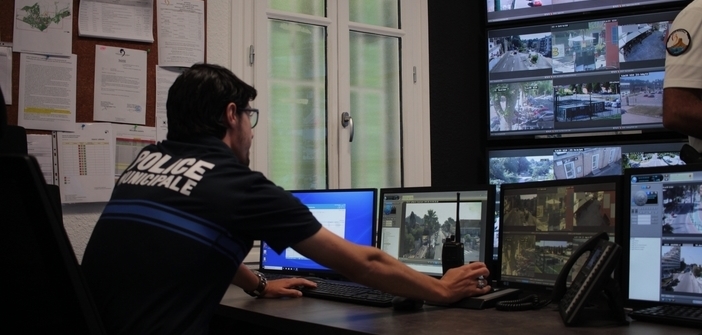This Tuesday marked the inauguration of the new Urban Supervision Center in Villeneuve-Loubet and the presentation of the new equipment for the Municipal Police. The event took place in the presence of Lionnel Luca, mayor of Villeneuve-Loubet and vice-president of CASA, Albert Calamuso, deputy in charge of public tranquility, and Claude Jean-Calixte, Chief of the Municipal Police.
Inside the Municipal Police station, the USC has been installed, aimed at improving the safety of property and people. The small room, a true “control tower,” is equipped with 9 screens on totems, 4 screens on adapted furniture, and an additional screen. It centralizes images from the 70 video surveillance cameras spread across the community (around four key zones) and analyzes the data viewed in real-time or delayed. However, the storage of images is limited in time, up to 28 days according to the law. The USC appears as a vital structure for communal services by reducing intervention time through increased responsiveness.
“We have the same issues as large cities, especially with crime. The municipality is crossed by many traffic routes, as well as the SNCF station, making us a transit area where all kinds of trafficking can occur. Our area is the same as that of Cannes, and in summer, the population rises to 45,000 people,” explains Albert Calamuso.
The sectors where cameras are installed aim to address five major problems that the municipality might encounter:
1 – The safety of property and individuals
2 – Protection of public buildings and their surroundings
3 – Management of public space
4 – Traffic regulation
5 – Detection of violations against traffic and parking rules.
There are also 3 “Flood” cameras of the Loup, to prevent flood risks by enabling alerting and quicker evacuation of the population.
The municipal police officers have also received more modern and tailored equipment for the situations they face. For example, they have four body cameras, which, when worn, allow them to film interventions (with prefectural authorization) and provide evidence in case of dispute. “In the event of conflict, we can activate this camera, but not every officer will do so in the same situation. It depends on our response to an insult or outrage,” specifies Claude Jean-Calixte.
Over a six-month period, the USC reported 377 events detected by video, averaging two per day.


